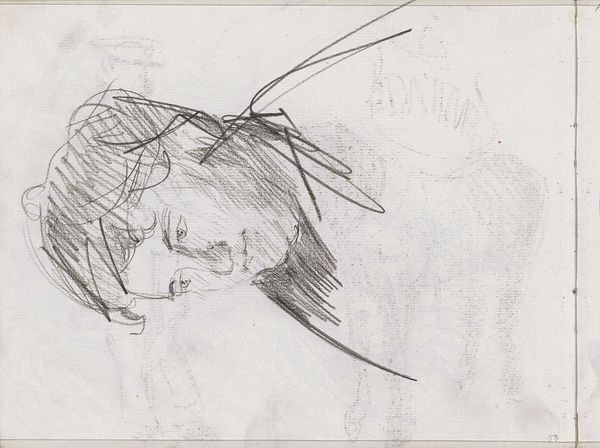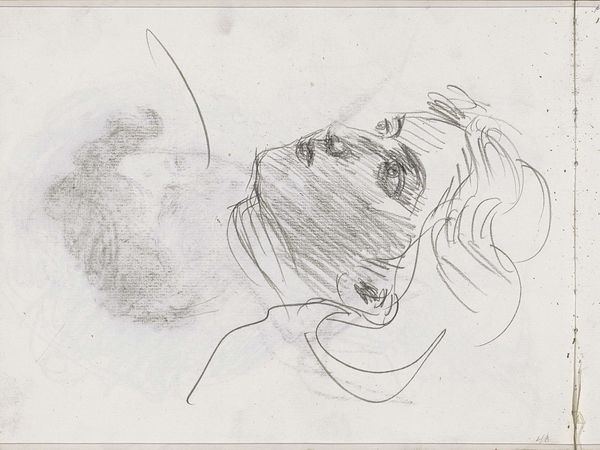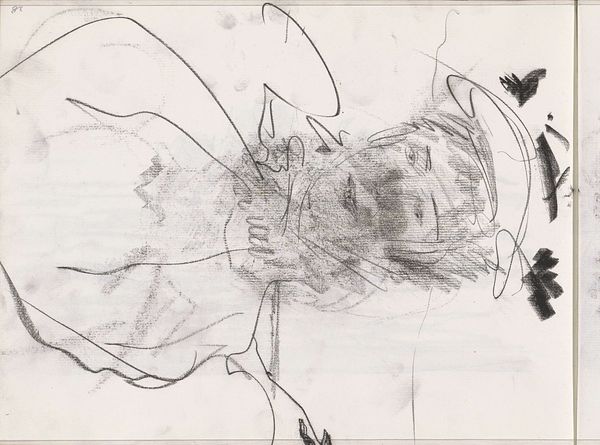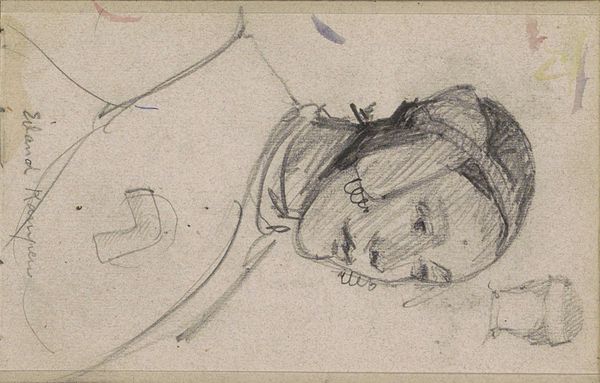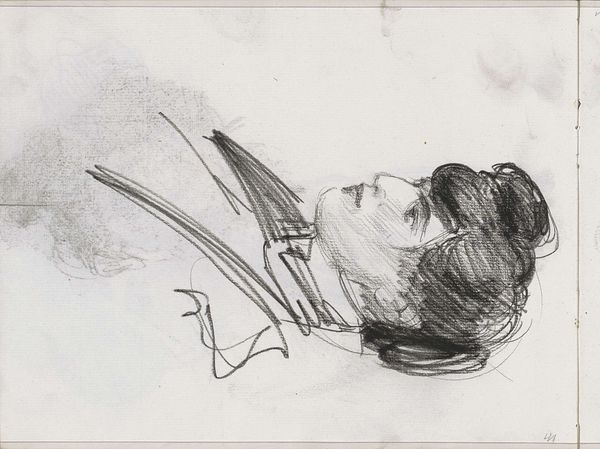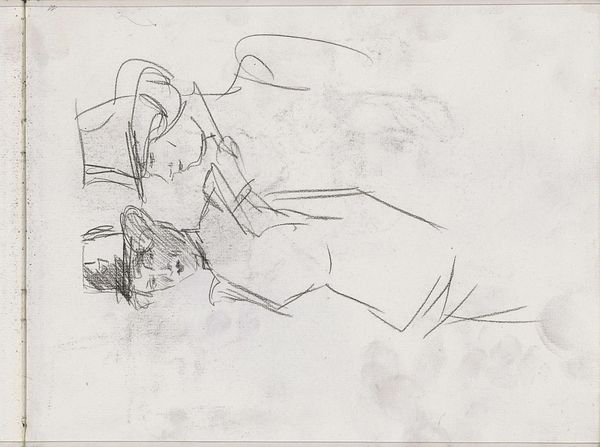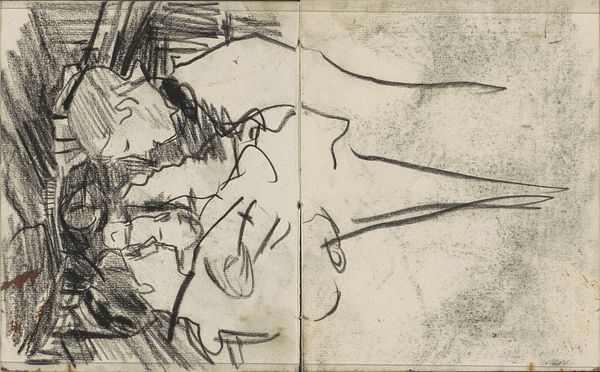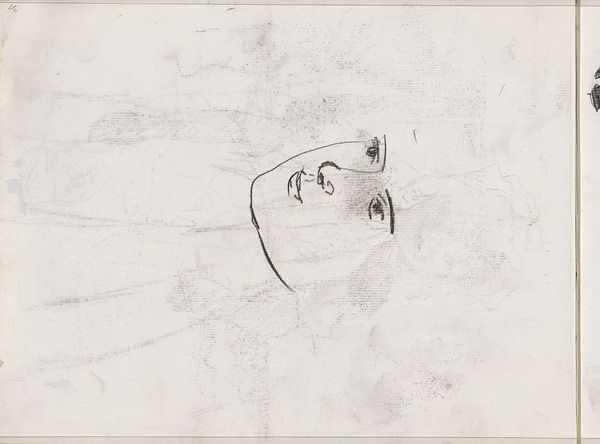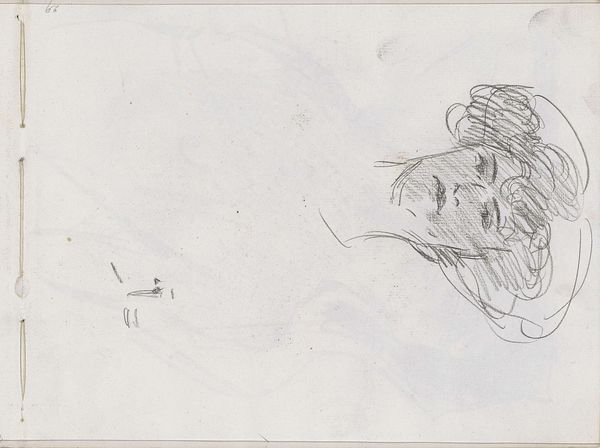
Copyright: Rijks Museum: Open Domain
Editor: Here we have "Vrouwenhoofd," or "Head of a Woman," by Isaac Israels, created sometime between 1875 and 1934. It’s a pencil drawing on paper. There's something very intimate about this sketch, like a stolen moment. What do you see in this piece, Professor? Curator: It's interesting that you use the word "intimate." Sketches like this, even when displayed in institutions like the Rijksmuseum, provide us insight into the artist's process. We see Israels grappling with form, perhaps experimenting. But it also speaks to a broader shift in the role of the artist in society. How did Impressionism change expectations about finished artworks, do you think? Editor: I guess, it moved away from purely academic traditions. Instead of striving for perfect realism and narrative, artists like Israels explored more personal and fleeting impressions. Curator: Exactly. And that’s deeply intertwined with social and cultural changes. As the art world expanded beyond the patronage of the elite, works like this drawing – perhaps never intended for public view – gained recognition. Museums today show not just finished masterpieces but these glimpses into the creative act. What is gained, but also lost, when something created in private is put on display for the public? Editor: It gives the public access to a normally hidden space. At the same time, presenting such a fragile, preliminary sketch as high art also shapes how we think about art, possibly lowering the barrier to entry for aspiring artists. Curator: Precisely. This sketch underscores the public role of art institutions: we collect, preserve, and, most importantly, define what gets valued. "Vrouwenhoofd" here invites conversations about artistry, access, and value in the modern era. Editor: I see how a simple drawing prompts larger questions about art’s place in the culture and the influence of the institutions exhibiting the art. It gives a behind-the-scenes view and promotes understanding about art-making that might otherwise remain unknown to many people.
Comments
No comments
Be the first to comment and join the conversation on the ultimate creative platform.
